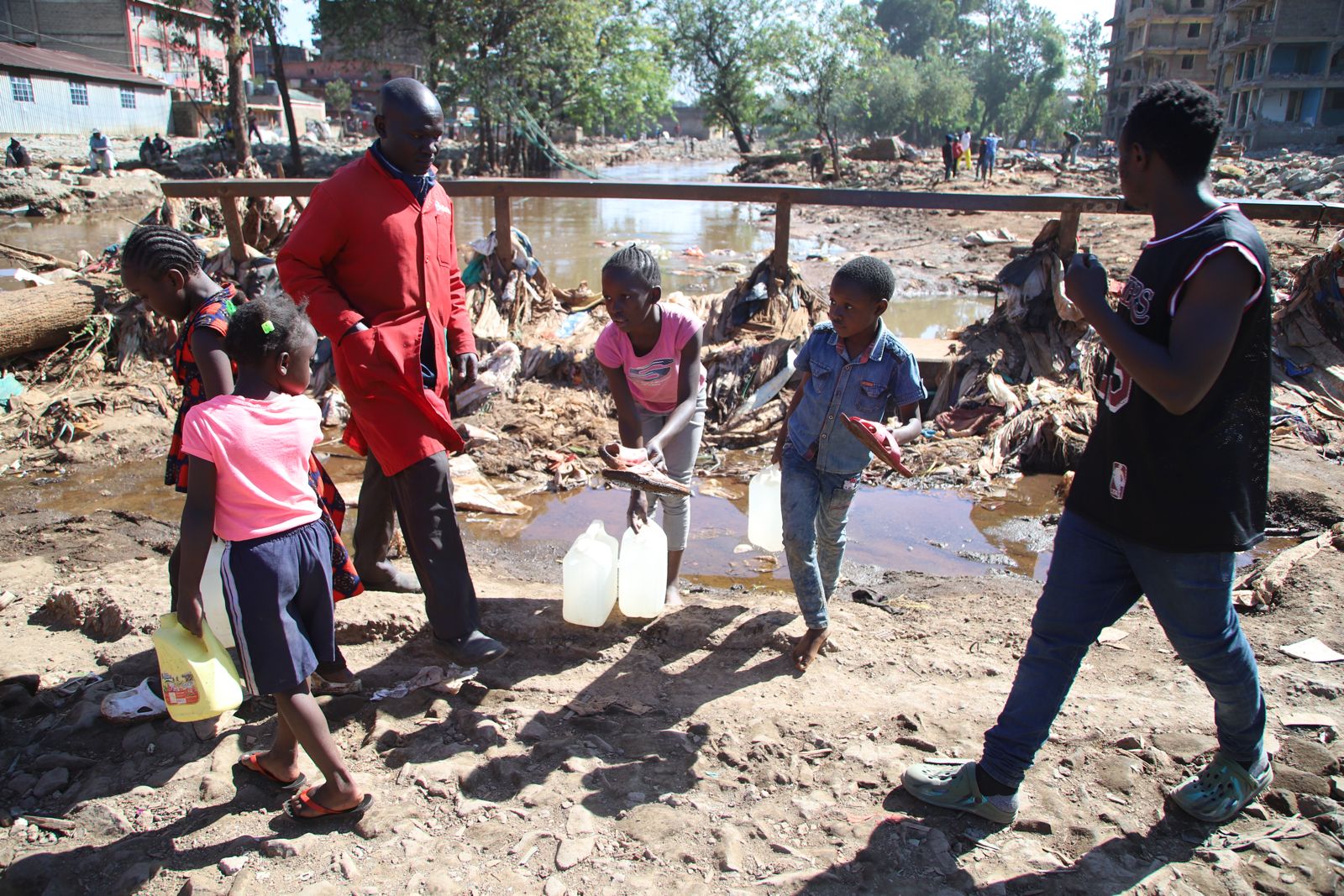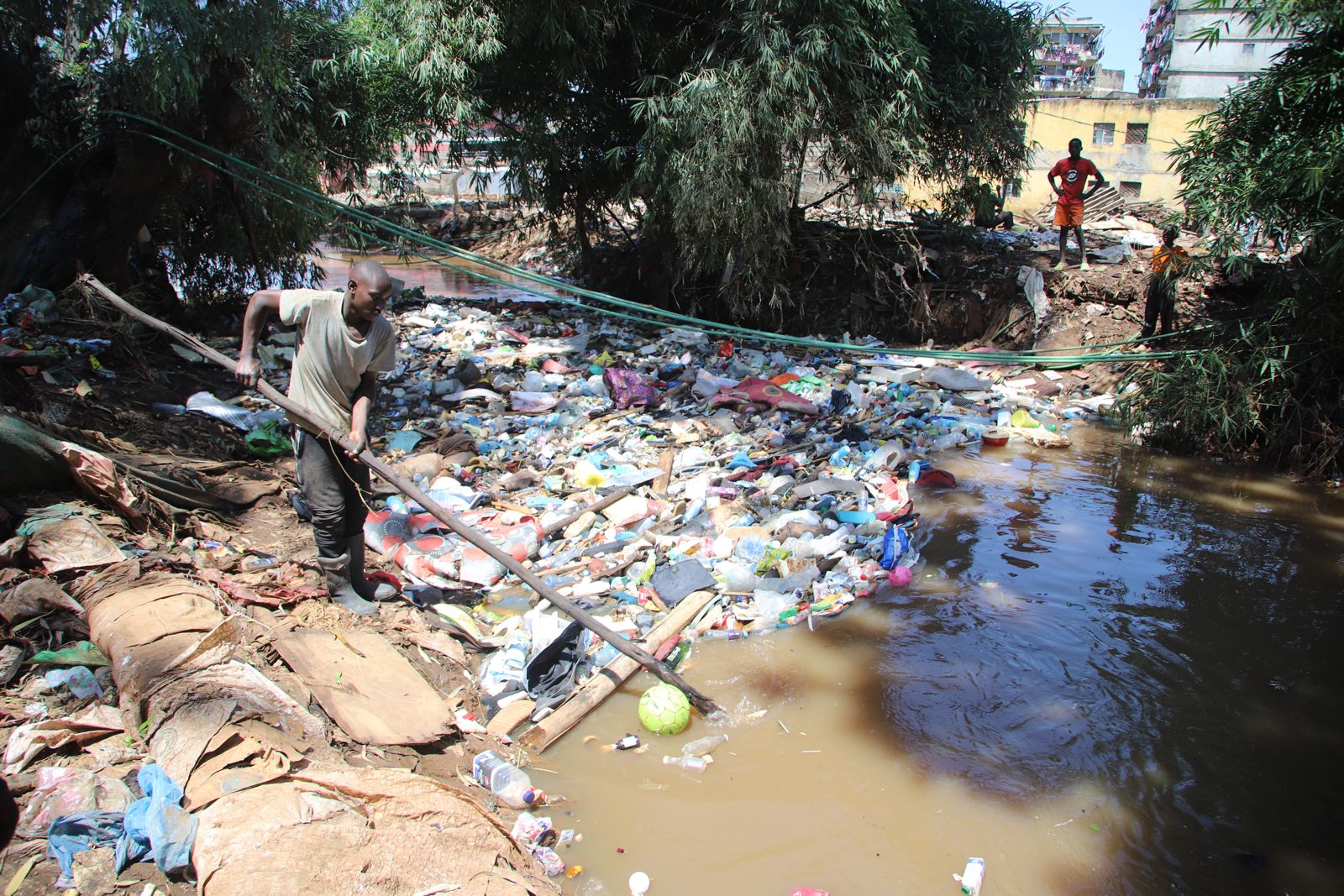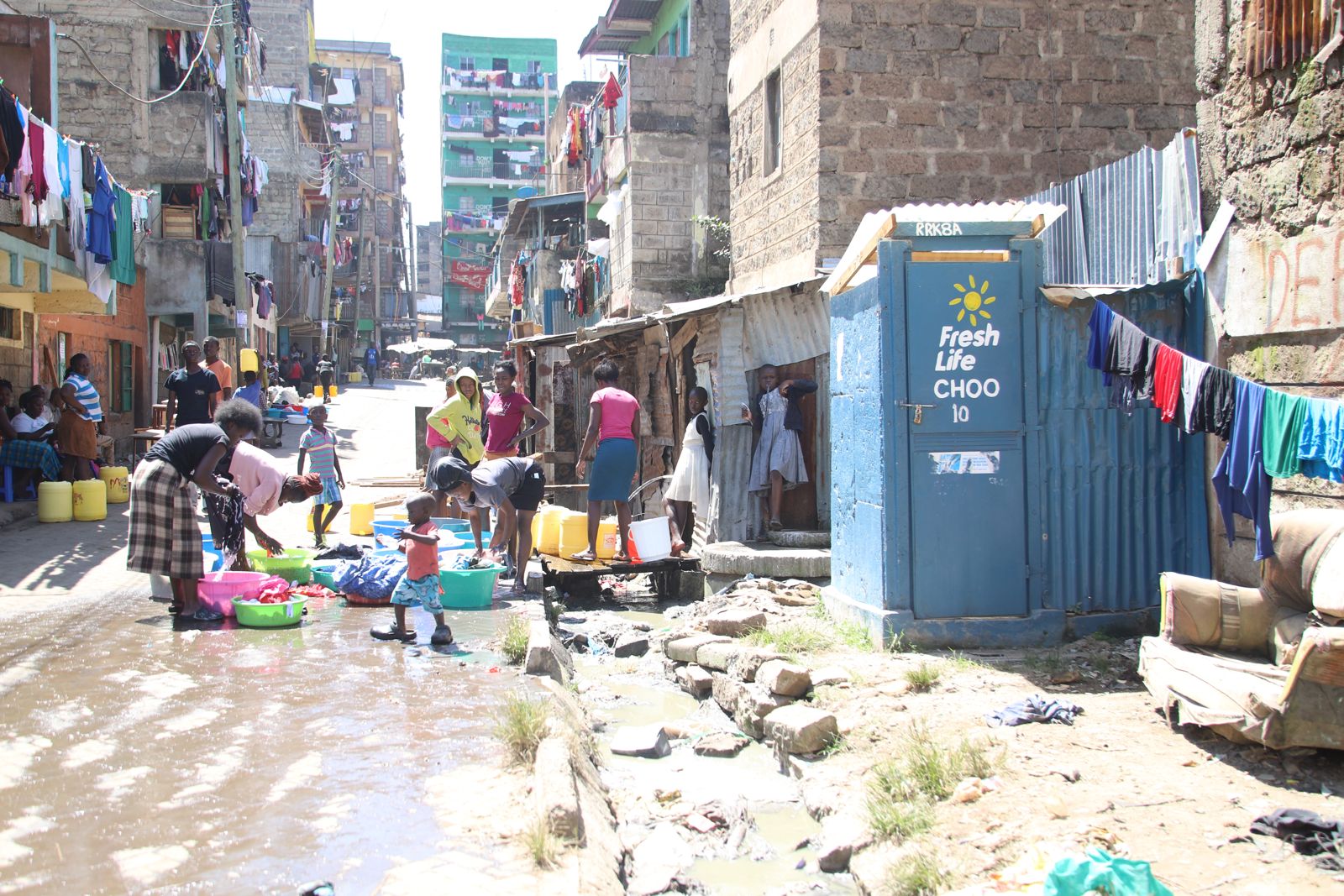In the heart of Nairobi, where the city’s skyline gives way to crowded slums and makeshift homes, the air is thick with despair. The recent floods had swept through the forgotten alleys of Mathare, bringing with them more than just the smell of decay and destruction. They had left behind a lingering danger – a silent killer – that no one could see but everyone could feel.
The day was sweltering, yet the ground remained sodden with the aftermath of days of relentless rain. The children waded through the murky, trash-filled waters as if it were an ordinary walk to school. Their tiny feet, bare and exposed, splashed in puddles that shimmered with oily rainbows from the refuse swirling around. It was a scene almost apocalyptic, yet for the residents here, it was just another day.

A Child’s Innocence Amid the Ruins
Nine-year-old Mercy held two plastic jerrycans full of water in her tiny hands, her dark skin gleaming with sweat. Her brow was furrowed with the seriousness of someone far older than her years. She, along with her younger sister, had been sent by their mother to fetch water. The river – once a vital lifeline to the slum’s survival – had transformed into a toxic brew of waste, sewage, and the remnants of what the floodwaters had carried downstream.
As she carefully made her way toward the water’s edge, avoiding the sharp edges of broken plastic and discarded food wrappers, her bare feet slipped slightly in the mud. Her eyes met mine briefly, and in them, I saw a world of resilience – a strength born out of necessity.
“We don’t have a choice,” she said, her voice steady despite her age. “We need water, but we know it makes us sick.”
Behind her, a group of children huddled together, playfully competing over who could gather the most debris. Their laughter seemed jarring against the backdrop of destruction, a poignant reminder that even in the harshest conditions, life finds a way to persist. But with every splash they made in the water, a new ripple of danger was sent forth – cholera, typhoid, dysentery – names that lurked unseen beneath the surface of the brown, stagnant water.

The Forgotten Victims of Climate Change
Across the polluted stream, James Ochieng, a father of five, stood with a wooden stick, helping two young boys retrieve their soccer ball, which had rolled into the debris-filled water. The makeshift bridge, a shaky structure of rusted metal and weathered wood, had become a battleground against the floods, which had destroyed most of the footpaths and left the community stranded on either side of the polluted river.
“When the floods come, they take away our lives,” he said, his voice hoarse, not from sickness, but from years of shouting above the daily grind of the slums. “We don’t need scientists to tell us about climate change. We see it every day. The rain used to come, but not like this. This… this is not normal.”
He gestured towards the river, where pieces of garbage floated by. “Look at this. This water, it’s poison. But what can we do? The government doesn’t come here. The world doesn’t care about us.”

Waterborne Diseases: The Unseen Enemy
The dirty water was only part of the problem. For the people of Mathare, the floods had brought with them a wave of diseases that no one was prepared to fight. Local clinics were overwhelmed, understaffed, and under-resourced. Cases of cholera and dysentery had spiked, particularly among children. The bacteria thrived in the contaminated water, infecting those who drank it, bathed in it, or even touched it.
In one corner of the slum, near the communal latrines, a group of women had gathered to wash clothes. Fresh puddles of water pooled at their feet, each splash another potential infection. Mary, a middle-aged mother, bent over a tub, her hands raw from scrubbing. She had heard of the waterborne diseases spreading through the community, but her worry was mixed with resignation.
“My youngest has had diarrhea for days,” she whispered, eyes darting toward her one-year-old son playing nearby. “I took him to the clinic, but they said there’s no medicine. What can I do? If we don’t wash our clothes, we’ll get sick. If we use this water, we’ll get sick. It’s like we are trapped.”
The desperation in her voice was palpable, an echo of the feelings shared by hundreds of families across the slum. There was no escaping the water, no escaping the disease. Every action carried a risk, and every day felt like a balancing act between survival and succumbing.
A City’s Neglect, A People’s Strength
For years, Nairobi’s slum dwellers have been forgotten by the systems meant to protect them. The floods had become more frequent and more devastating, yet the city’s infrastructure had remained inadequate. Trash collected in rivers, blocking drainage and amplifying the floods when the rains came. Buildings – hastily constructed and often unregulated – crumbled under the weight of the water, turning homes into death traps.
And yet, amid the neglect, there was resilience. Families like James’s continued to find ways to survive, children like Mercy still fetched water despite the dangers, and mothers like Mary still washed their clothes in the polluted streams. They fought, not just against the water, but against a system that had abandoned them long ago.
The rains would come again, that much was certain. And with them, so too would the diseases, the floods, and the fear. But as I walked away from Mathare, I couldn’t help but feel a deep respect for the people who lived there. They weren’t just victims of climate change or government negligence – they were survivors, doing everything they could to keep their heads above water in a world determined to drown them.
As the sun began to set over Nairobi’s skyline, casting a golden hue over the slum’s makeshift homes, I realized that the true story of this place was not just about floods or diseases. It was about the strength of the human spirit – the ability to endure, to fight, and to hope, even in the face of overwhelming odds.